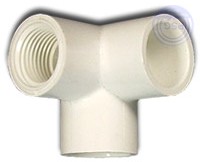Well, Joe I have to say that if your drawing skills are rivaled only by your skills as a hobbyist than please accept my sincerest apologies for your fish.
All kidding aside though, my drawing skills aren't anything to brag about so I have no room to talk. Looking at your drawing makes more sense now. I kind of thought that is what you were talking after thought about it some more earlier but wasn't sure. Much better than the egg crate idea for the top that I had.
@ Dean: No problem, that's what I'm hear for...to give moderately sketchy advice and to annoy the heck out of Joe while trying to learn a thing or two all at the same time. It isn't easy! If nothing else I just like tossing ideas around with other people to help give me more ideas for some of my own projects. And he is right, the aragonite sand is a good sand for reefs. It's essentially fossilized coral crushed up. It slowly dissolves overtime and releases trace elements into the tank that are beneficial for live corals. Helps stabilize ph as well if I'm not mistaken. I kind of like the finer sand more for aesthetics I just think it looks a little more like a natural sea sand bed.
I'd try to get friendly with some of the folks at your local fish stores. Ask lots of questions and try to find one that you feel is really willing to help you reach your goal in becoming a reef addict and not just out to take your money. Chances are they may sell or give you a cup of sand to help you out. If not you could always buy a couple of small pieces of live rock to toss in the tank to help kick of a bacterial colony.
Ghost feeding is just a term used for feeding a tank that has no fish or any other livestock in it. What a lot of people here like to do is take a raw dead shrimp and toss it into a brand new tank. What happens is as it decays over a couple of days it releases ammonia into the tank. And once that happens then the bacteria will have a reason to grow and begin to flourish. It's much more humane than using a live fish to cycle a new tank.




